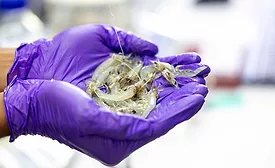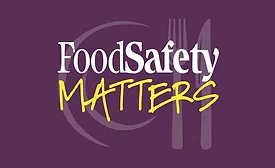Home » Keywords: » CORE
Items Tagged with 'CORE'
ARTICLES
Several tools and data sources are used in signal detection to evaluate genetic and epidemiologic information linked to foodborne outbreak investigations
Read More
Lessons Learned from Outbreaks: Publications and Reports from FDA's CORE+EP in FY2024
Information collected during a foodborne illness outbreak investigation can be used to inform and improve future investigations and prevention activities
October 10, 2025
Outbreaks of Foodborne Illnesses and Recalls Associated With Ice Cream and Frozen Dessert Products
Reports in the literature indicate that ice cream has been associated with illnesses linked to numerous pathogens, including Listeria, which can cause severe illness
Brett Weed M.P.H., M.S.
Karunya Manikonda M.P.H.
Allison Wellman M.P.H.
Greg Gharst Ph.D.
Matthew Doyle D.V.M., M.P.H.
Amanda Conrad M.P.H.
Alexandra Palacios M.P.H.
Melanie LaGrossa M.P.H.
Stelios Viazis Ph.D.
July 1, 2024
The Evolution of FDA CORE: Adaptive Response to Outbreak-Related Challenges
Since the CORE Network was established in 2011, its dedicated staff has worked to adapt to an ever-changing foodborne illness outbreak investigation landscape
Stelios Viazis Ph.D.
Christina K. Carstens Ph.D., M.S.
Lindsay Walerstein, M.P.H.
Marie Armstrong M.P.H.
Angela Fields M.P.H.
Tyann Blessington Ph.D., M.S., M.P.H.
Cerisé Hardy M.P.H.
Sharon Seelman M.S., M.B.A.
Brett Weed M.P.H., M.S.
February 13, 2024
A Review of Outbreak Investigations of Salmonella Infections Associated with Cashews and Cashew-Containing Food Products in the U.S.
Salmonella spp. have long been associated with low-moisture foods such as nuts and nut-derived products
Margaret Kirchner Ph.D.
Gordon R. Davidson Ph.D.
Julia Mangia M.P.H.
Spencer Carran Ph.D.
Andrea J. Krause Ph.D.
Karunya Manikonda M.P.H.
Zachary D. McCormic M.P.H.
Laura Gieraltowski Ph.D.
Katherine E. Marshall M.P.H.
Stelios Viazis Ph.D.
August 8, 2023
The Incident Command System and Foodborne Illness Outbreak Investigations
The Coordinated Outbreak Response and Evaluation (CORE) Network is the coordination focal point for all FDA resources during outbreak investigations
October 11, 2022
Outbreak Investigations of Cyclospora cayetanensis Infections 2013–2020: Progress Made and Challenges Remaining
Recurring outbreaks of cyclosporiasis underscore the need for a comprehensive understanding of how Cyclospora cayetanensis contaminates water and produce
Stelios Viazis Ph.D.
Fazila Shakir M.H.S.
Anne Straily D.V.M.
Adrienne Goodrich-Doctor Ph.D.
Jeffery L. Sumter Dr.P.H.
Socrates Trujillo Ph.D.
April 20, 2022
Never miss the latest news and trends driving the food safety industry
eNewsletter | Website | eMagazine
JOIN TODAY!Copyright ©2025. All Rights Reserved BNP Media.
Design, CMS, Hosting & Web Development :: ePublishing











